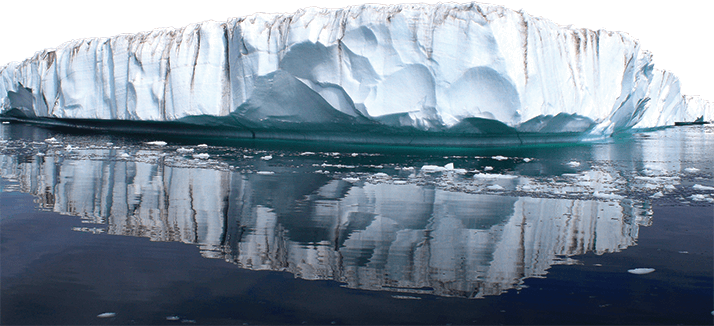Researchers described themselves as “stunned” to find beryllium-10 (10Be) isotope in ice core samples at concentrations orders of magnitude higher than they had anticipated. The finding indicates that a 2.7 million year-old soil still exists beneath the glacier, according to University of Vermont geologist Paul Bierman, lead investigator of a recent study (1).

Formed principally by cosmic rays, 10Be accumulates on land through rainfall; the longer soil or rock is exposed at the Earth’s surface, the more 10Be it accumulates. Continental ice sheets tend to strip landscapes clean, so the team had expected the erosive forces at play to remove most, if not all, 10Be and soil from the bed of ice below the summit. “We actually set up the experiment with multiple blanks and extra cleaning of labware so that we could detect very small concentrations,” says Bierman.
The team measured organic carbon and total nitrogen in addition to 10Be. The concentrations of C and N, measured using a Carla Erba elemental analyzer, point to organic material and the likelihood that a tundra-style landscape once existed before ice coverage. So, Greenland really was green once upon a time.
The 10Be analysis was somewhat more complicated. The samples, along with a spike of 9Be, were fluxed over a natural gas/oxygen flame in a mixture of potassium hydrogen fluoride and sodium sulfate, which renders the beryllium and potassium soluble. “We then isolated the beryllium, purified, dried and oxidized it to beryllium oxide, and analyzed isotopically using an accelerator mass spectrometer at Livermore National Laboratory,” says Bierman.
The study is a logical extension of Bierman’s long-standing and broader interest in understanding the rate at which landscapes change over time and space. “I want to know how glaciers, particularly ice sheets, work: where they erode and how rapidly they do so. Greenland is an easily accessible ice sheet about which we know some things but not others,” he says. “The new results tell us that over the last 2.5 to 3.0 million years, the ice sheet has protected the soil beneath, which means continuous or nearly continuous ice cover since then.” Bierman concluded a university press release (2) with the comment that, if the human race continues on its current trajectory, “the ice sheet will not survive. And once you clear it off, it’s really hard to put it back on.”
References
- 1. P. R. Bierman et al., “Preservation of a Preglacial Landscape Under the Center of the Greenland Ice Sheet”, Science, published online 17 April 2014. DOI:10.1126/science.12490472. http://tas.txp.to/0514/Vermont




